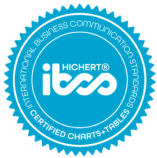Get your hands on the latest features like basis points in Zebra BI Tables, difference highlights of subtotals in Zebra BI Charts, and KPI descriptions in Zebra BI Cards. Most importantly, the user experience of the visuals is getting even more seamless with the migration of the settings to the visuals. It literally opens a new era for Zebra BI visuals in Power BI!
Santa came early this year, let’s unwrap the presents.


 September 8th
September 8th February 22nd
February 22nd

